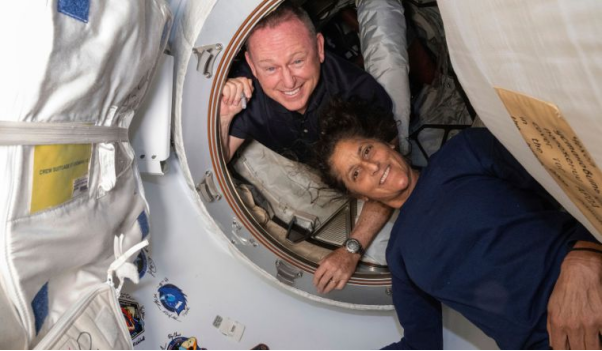
Astronauts Sunita Williams and Barry Wilmore Stranded in Space: NASA’s Apollo 13 ‘Successful Failure’ Provides Hope
By Fiona Nanna, ForeMedia News
9 minutes read. Updated 11:30AM GMT Fri, 28, 2024
Will Astronauts Sunita Williams and Barry Wilmore, Currently Overtime on Boeing’s Starliner Capsule, Ever Return from Space?
Astronauts Sunita Williams and Barry Wilmore are currently facing an unexpected extension of their mission aboard Boeing’s Starliner capsule. Initially planned as an eight-day mission, the timeline has now stretched to a month, with the latest targeted return date set for July 6. This delay raises questions and concerns reminiscent of the historical Apollo 13 mission, often termed NASA’s “successful failure.”
Technical Hurdles and Echoes of Apollo 13
The current challenges facing the Starliner crew draw parallels to NASA’s “successful failure” of the Apollo 13 mission. In 1970, an explosion on Apollo 13 left three astronauts stranded over 205,000 miles from Earth, leading to an extraordinary survival effort. This mission, led by Jim Lovell, Fred Haise, and Jack Swigert, transformed a potential catastrophe into a testament to human ingenuity and resilience.
Ongoing Struggles on Starliner
Since the June 5 liftoff, the Starliner capsule has encountered multiple technical issues, including five helium leaks, five non-functional maneuvering thrusters, and a problematic propellant valve. These problems have necessitated extensive in-mission troubleshooting by both the astronauts and mission managers in Houston. NASA officials aim to resolve these issues before confirming the capsule’s return.
Apollo 13: A Journey of Survival
The Apollo 13 mission, intended to be the United States’ third Moon landing, faced severe setbacks when an oxygen tank explosion compromised the spacecraft. With their lives at risk, the astronauts had to rely on teamwork, leadership, and innovative problem-solving to navigate the crisis. The crew’s struggle for survival involved overcoming a series of life-threatening obstacles, including dwindling oxygen, water shortages, and freezing temperatures.
The Heroes of Apollo 13
Commander Jim Lovell, Lunar Module Pilot Fred Haise, and Command Module Pilot Jack Swigert faced unprecedented challenges. Their journey was marked by a critical moment when Swigert, upon a command from Mission Control, stirred the oxygen tanks, leading to a catastrophic explosion. This event triggered the now-famous phrase, “Houston, we’ve had a problem,” highlighting the gravity of the situation.
The Apollo 13 mission’s success lay in its ability to adapt and innovate under extreme conditions. The crew’s use of the lunar module as a lifeboat, the improvisation of carbon dioxide filters using plastic bags and tape, and the meticulous planning of their return trajectory around the Moon exemplify this. Despite the severe setbacks, the mission ended with the safe return of the astronauts, cementing Apollo 13’s legacy as a “successful failure.”
While the situation aboard Starliner is not as dire as Apollo 13, the technical challenges echo the need for resilience and problem-solving. NASA’s focus remains on understanding and fixing the issues before planning the safe return of Williams and Wilmore. The lessons from Apollo 13 provide a blueprint for overcoming such challenges in space exploration.
As the world watches, the situation of Sunita Williams and Barry Wilmore aboard Starliner remains fluid. Drawing inspiration from the Apollo 13 mission, there is hope that the current technical issues can be resolved, ensuring the safe return of the astronauts. For ongoing updates and more detailed coverage of space missions, follow our dedicated space news section.
For more insights and historical perspectives on space missions, visit our space exploration archives.

